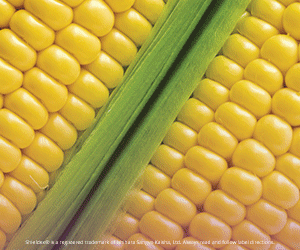The evolution of tiling technology
HOW AMERICAN FARMERS ARE ADDRESSING N RUNOFF
Nearly 200 years after US farmers began installing subsurface drainage, tiling practices are evolving to help address new agronomic issues such as nitrate loss from runoff.
Tiling is especially common in the Upper Midwest, where glacial processes produced an abundance of highly productive but poorly drained soils. Currently, surface or subsurface drainage is utilized on about a quarter of US farmland.
Dr. Matt Helmers, Iowa State Associate Professor of Agricultural and Biosystems Engineering, explains the importance of tiling to corn production in water-logged soils. “If your field stays saturated for two days during emergence, emergence can go from 90 percent down to 40 percent. So we need to solve water-logging within one to two days.”
For the effect on yield, Helmers cites a 2003 southeast Iowa field study that showed yields of 170 bushels per acre for plants more than 60 feet from a tile line, improving to 186 bushels per acre within 15 feet of a tile line and 188 bushels directly over the tile. In a 2009 study, effective drainage produced a 20 bushel yield bump in soybeans. Tiling also improves trafficability in fields, “we can get in with equipment earlier,” notes Helmers.
The benefits of tiling will vary, depending on weather (especially excess moisture or drought), the soil, and drainage design. On the negative side, Midwestern farm drainage is pointed to as a contributor to high nitrate levels in water runoff and, ultimately, the “hypoxia zone” in the Gulf of Mexico. In a normal year, nitrate levels from most tile drains exceed US drinking water standards.
golden rule for management
While not a new practice, drainage water management is gaining new attention. This involves varying your water release and retention according to the season. Helmers offers a “golden rule” for the technology: only release the amount of water necessary to insure trafficable conditions for field operations and to provide an aerated crop root zone.
This means varying the water table depth throughout the year, beginning by raising it nearly to the surface during the non-growing season, lowering it for trafficability during planting, raising it to hold water and manage for plant health during the growing season, then lowering it again for trafficability during harvest (if needed). Water table levels can be monitored with shallow observation wells.
To achieve this requires installing a water control structure in a main, submain, or lateral drain to vary the depth of the drainage outlet. Current recommendations suggest setting the control outlet within six inches of the field surface in winter months and two or more feet below field surface during the growing season – a level that allows good aeration and root development in the top two feet but still captures water at deeper levels that would otherwise drain away.
This practice is only suited for fields that need drainage and is most appropriate for pattern drainage systems (rather than random systems). Fields should be flat (less than 0.5 percent slope) so each control structure can serve as many acres as possible.
Any drainage in excess of this is likely to carry away nitrates and water that is no longer available for crop uptake, Helmers explains, citing North Carolina’s Dr. Wayne Skaggs.
The amount of nutrients transported will be in proportion to drainage outflow, so growers who want to reduce nitrate loss should manage to minimize outflow from the tiles.
Research in North Carolina, where some 400,000 acres are managed with water control structures, indicates that properly managed structures have reduced nitrogen losses to coastal streams and estuaries by four million pounds per year.
Helmers notes some additional tips:
• Not all soils need the same drain spacing.
• Spacing may be different depending on design objectives.
• The water table elevation in a field may differ considerably from the water
level in outlet ditches or the weir elevation.
• A water table can fluctuate several inches in a day.
• Drainage design should consider costs and potential return.
• Future designs may need to consider both economic and environmental
aspects.
• Overall average long-term yield will vary as a function of drain spacing. A wide
range of water table depths, from one to four feet, will result in optimum
yields.
• It always helps to have a tile map.
More extensive details on drainage water management are available online at www.extension.purdue.edu/extmedia/WQ/WQ-44.pdf. •







